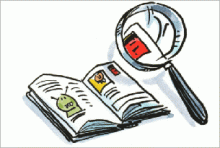Identification

Provides information and resources to help you identify unknown species that may be invasive. Species identification is important in helping gardeners, land managers, and landscape architects identify invasive species that can be harmful to local habitats. Concerned citizens are often the first line of defense in reporting signs and the spread of invasive species. Awareness and education are extremely important as prevention is key to combating invasive species.
An important caveat is it can be difficult to identify species properly on the Internet. If you are unable to identify the species in question, you may want to contact your county office in the Cooperative Extension System (see College Partners Directory) and work with Extension personnel to obtain assistance from an area agent or state specialist -- select state to see state pest detection contacts). Or, you may want to use the Ask Extension feature of eXtension - Invasive Species.
See related information:
Spotlights
Videos
All Resources
Selected Resources
The section below contains highly relevant resources for this subject, organized by source.
